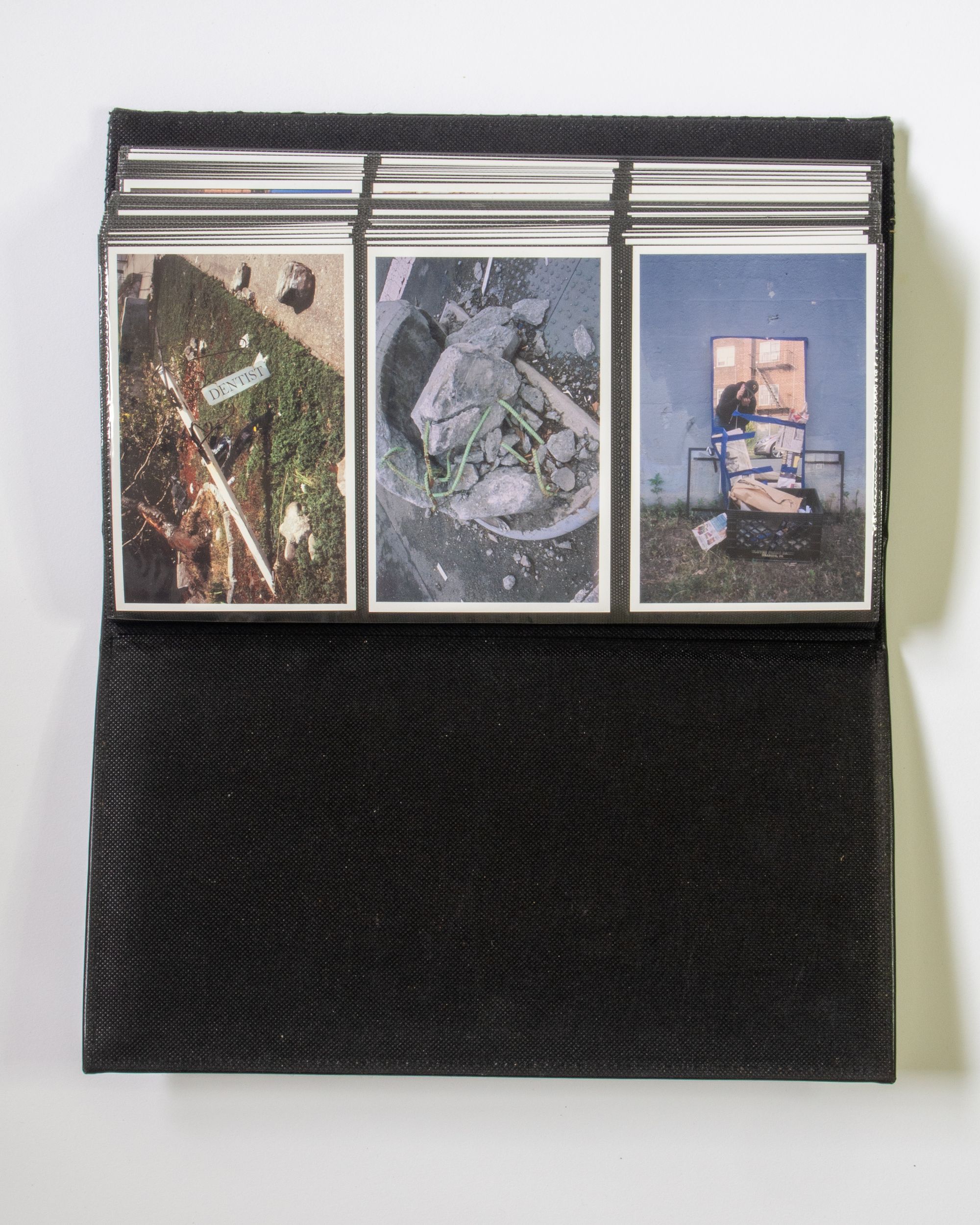Neighborhood Album
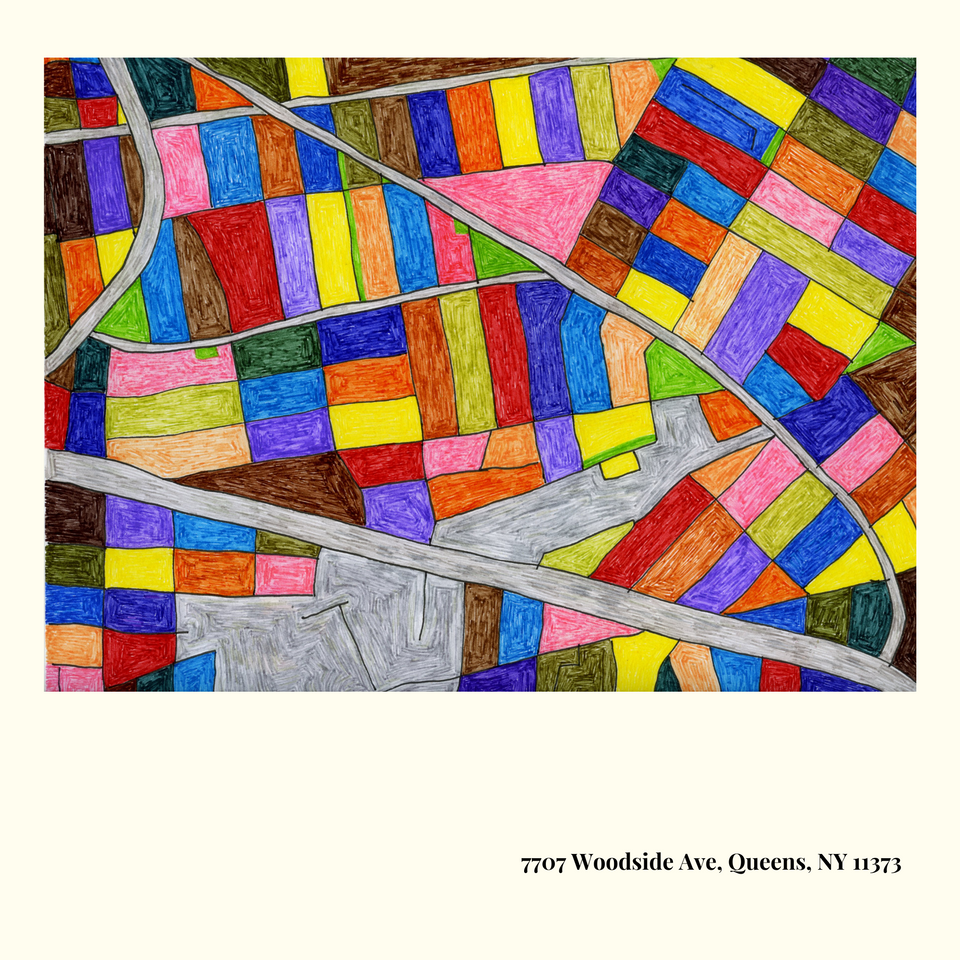
By 2017, I had been residing in Western Queens for several years, fortunate to have spent countless hours walking and observing its public spaces. I was captivated by the texture and colors of the built environment, particularly how the flora and fauna intersected with the grays and vibrant hues comprising the borough's palette.
Creatively, I felt it was a good project to explore the aesthetics of slide film, because I knew it would produce a different color palette than my digital and medium format work. I was intrigued by the challenge of achieving accurate exposures, and the uncertainty of the outcome was appealing.
I stocked up on Fuji Provia 100 slide film, and used my beat up old Bessa T with a 35mm viewfinder. After I had accumulated five rolls of film, I would take them to a lab in Manhattan for developing, ordering mounted slides and 4x6 prints of the entire roll.
Most of my walks occurred on weekends, with mornings being the optimal time to set off. I'd meander through the neighborhoods surrounding my Sunnyside apartment, exploring the pedestrian infrastructure and green spaces, with the familiar medley of residential and commercial buildings in view, and the ever-present rumble of elevated subway lines echoing in the background.
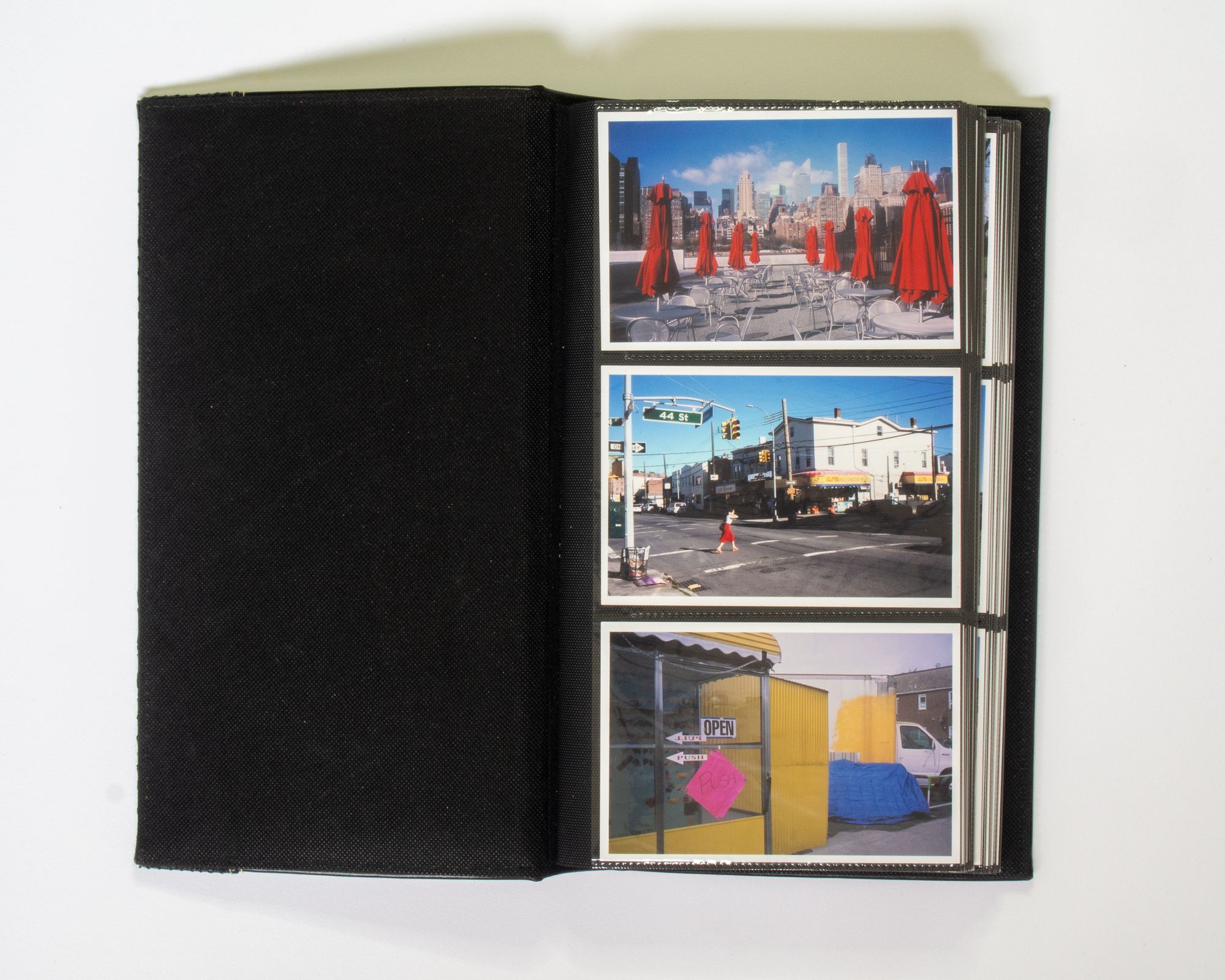
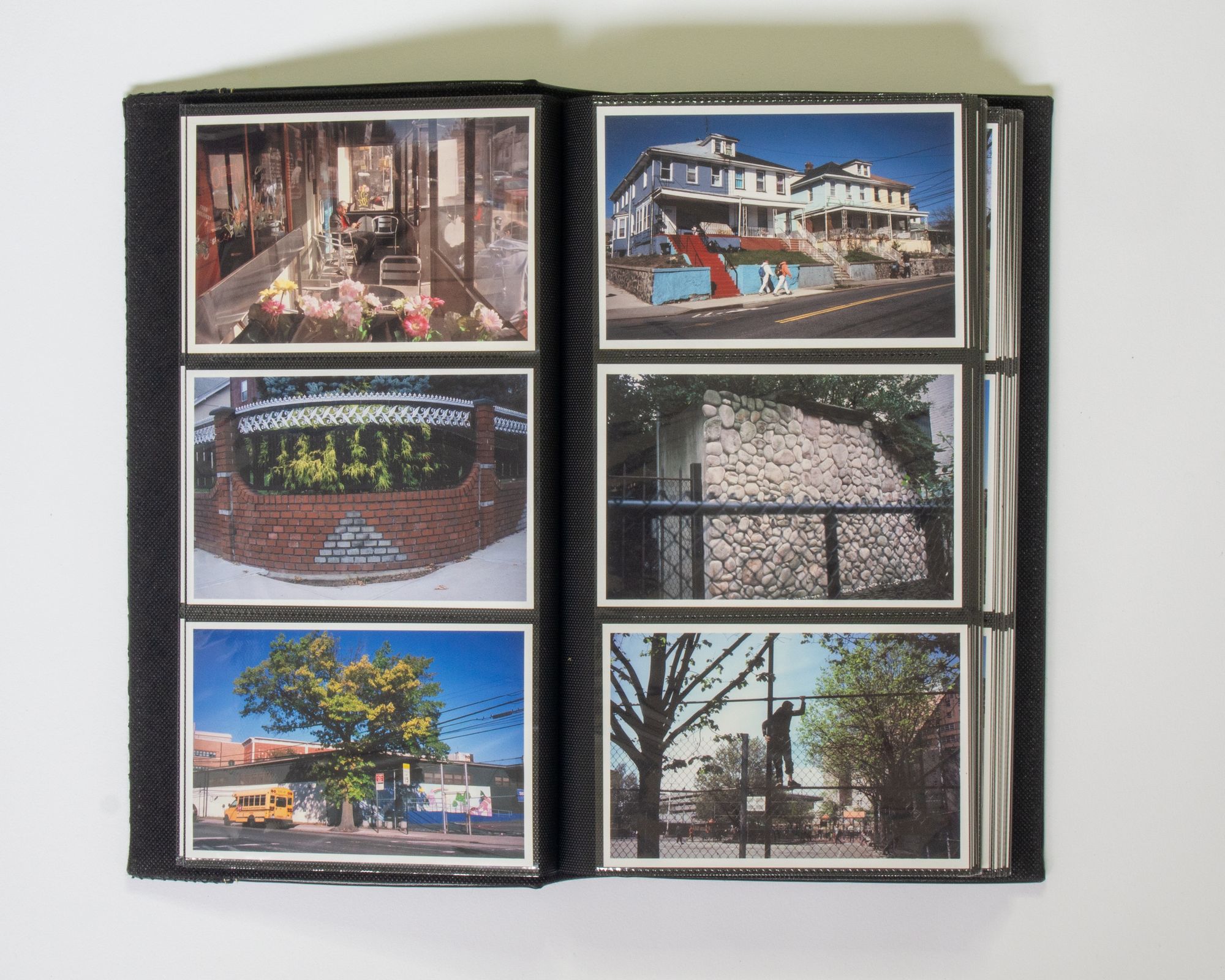
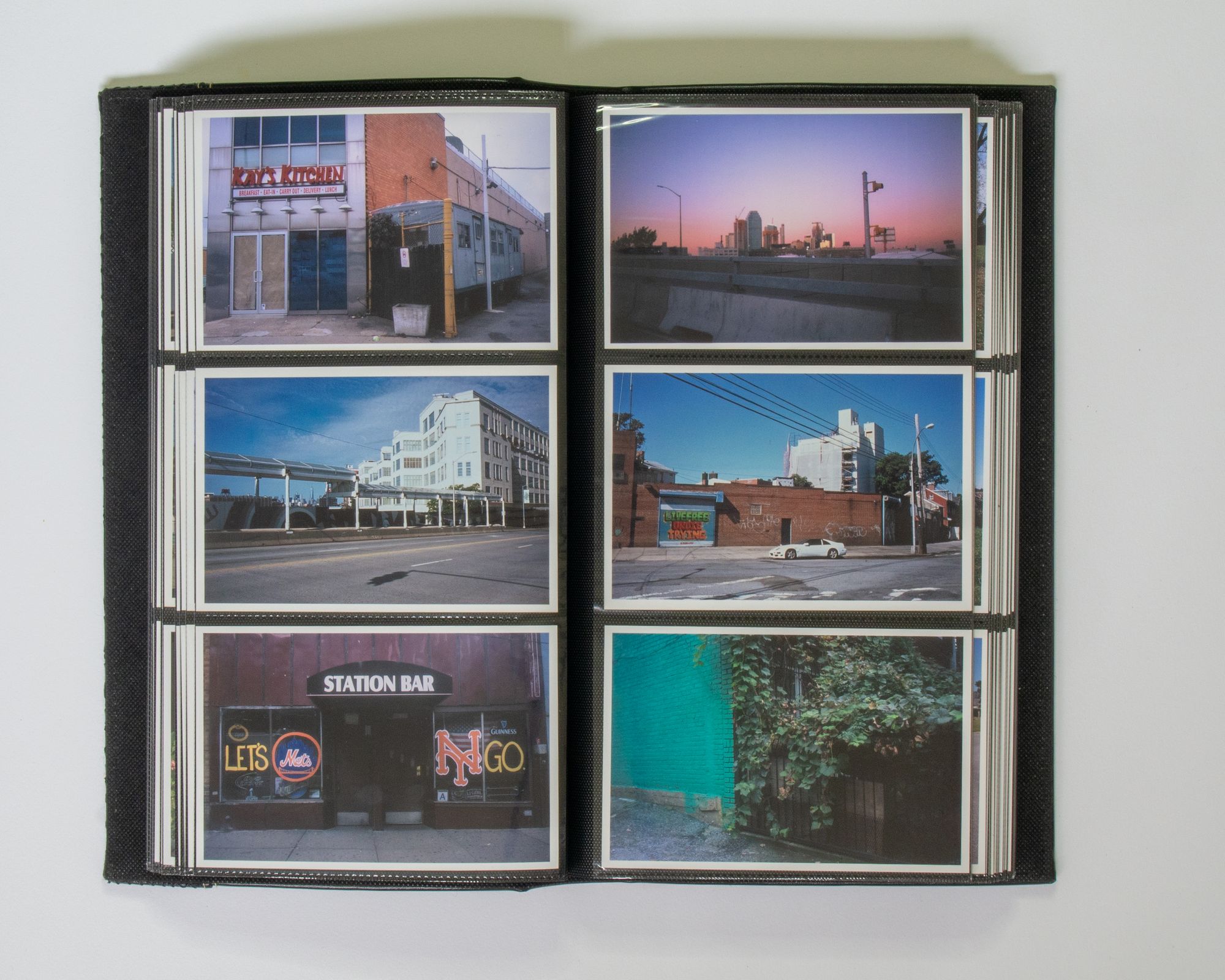

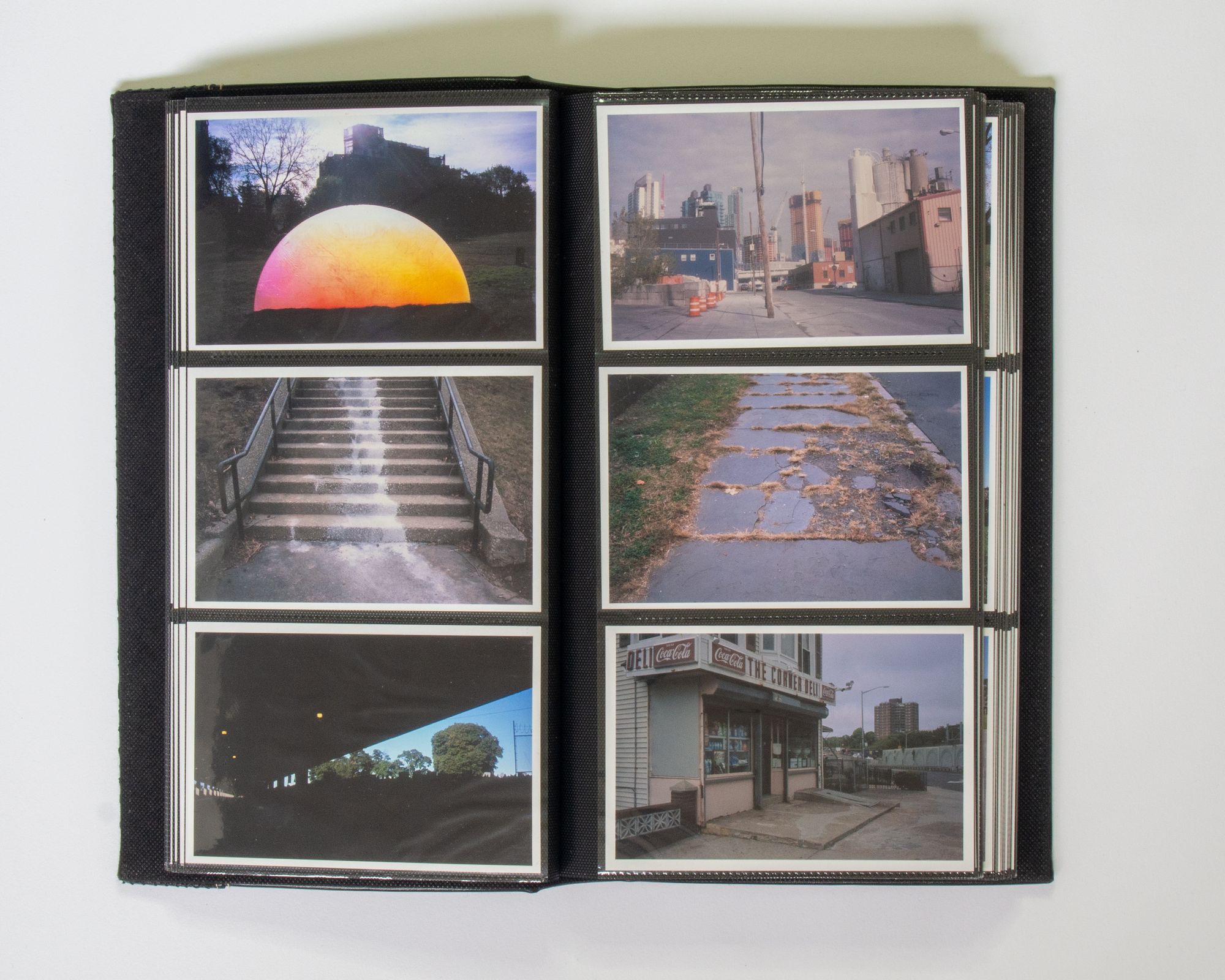
Neighborhood Borders
One of the many fascinating aspects of walking in New York City, particularly in Queens, is the fluidity of neighborhood boundaries. The ways in which pedestrian infrastructure connects these boundaries have inspired a deeper thematic focus in my creative endeavors.
If we were to categorize types of walks, the neighborhood stroll would certainly stand as one of the most typical. From a practical perspective, it's the path of least resistance: step out the door and saunter around the block.
The primary decision to make during such walks is determining the turning point to head back home. Mentally, I would always calculate the time it would take for the return journey. Over time, this rhythm and routine helped expand my mental map, broadening my understanding of the neighborhood's boundaries.
Within this framework and the constraints of my equipment setup, I found a flow that allowed me to concentrate on producing photographs that visualized the ideas stimulated during my walks.

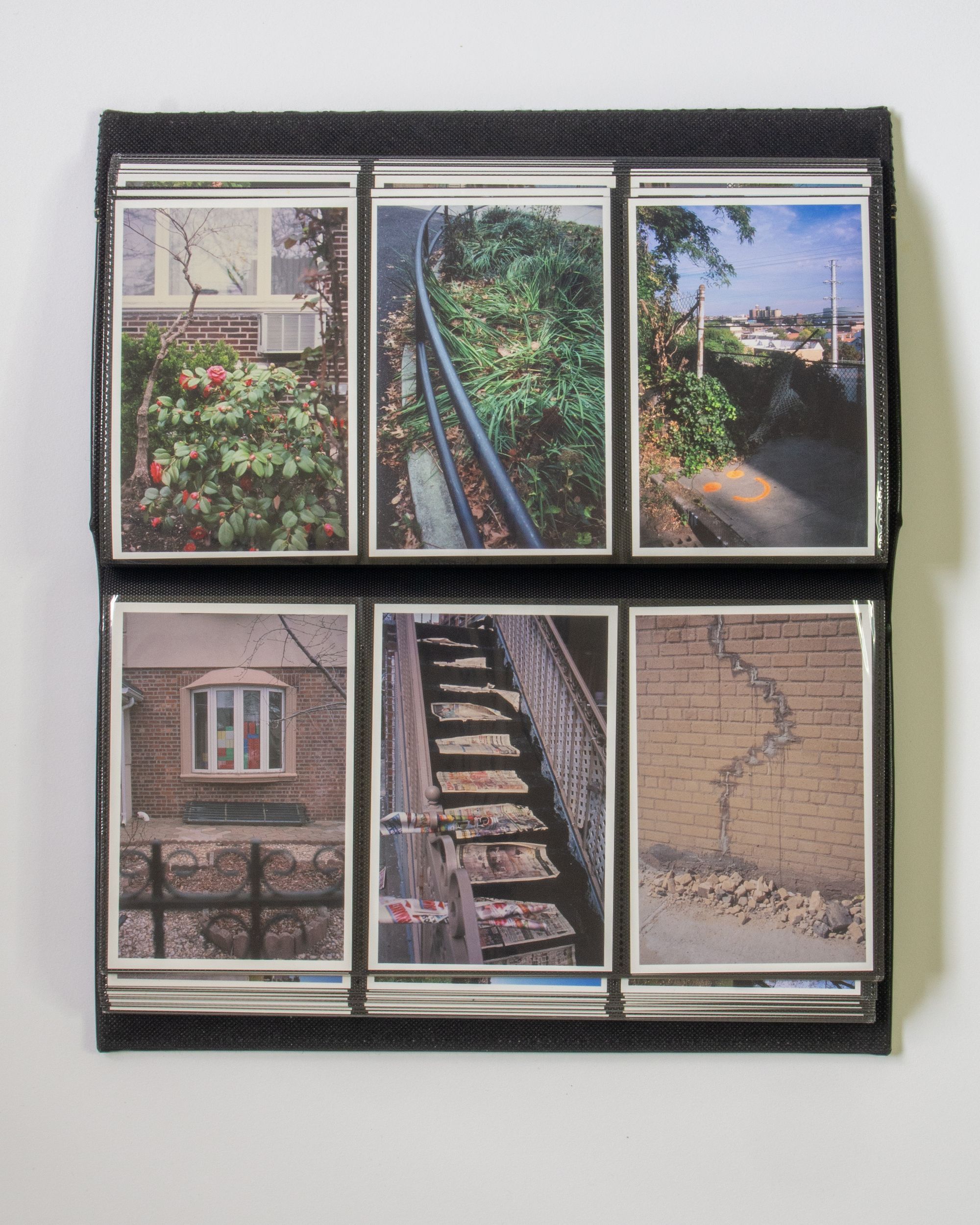
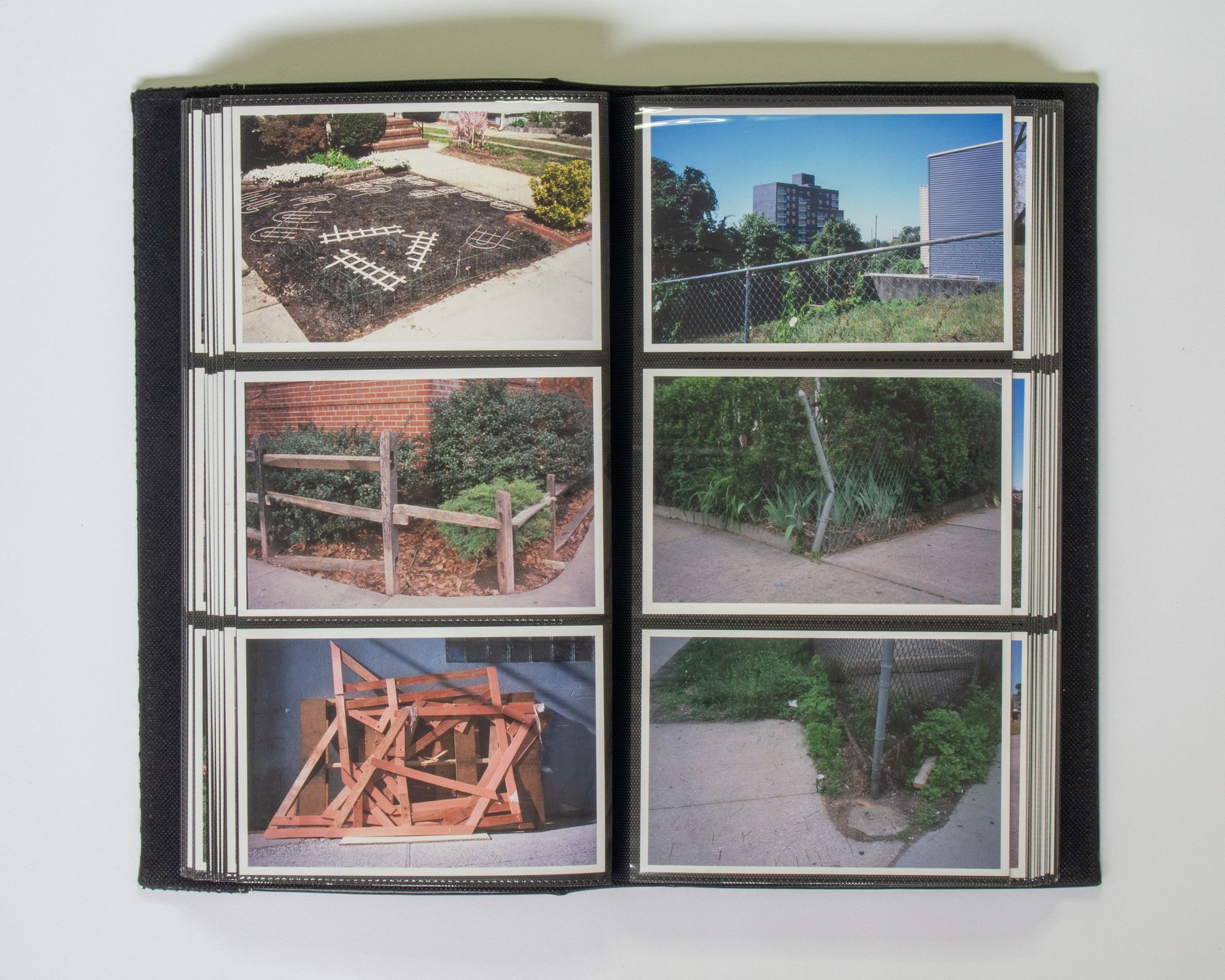

Photo Albums
Once, during an errand to the Walgreens on 43rd Ave in Sunnyside, I chanced upon a pile of dusty photo albums sitting on a rack. Purchasing a couple, I initially used them to store 4x6 work prints I'd amassed over the years.
As I gradually filled the albums, I recognized that this process was inspiring new thoughts around editing and sequencing. The albums served as a practical tool for honing these skills, acting much like training wheels for photo editing. I've always believed that the easiest way to progress is by immersing myself in a repetitive creative task, one where I can find a rhythm and sustain momentum.
The album format also served as an efficient forcing function for editing and sequencing work. It compels you to make decisions; in this case, there were 204 sleeves, with three on each side. These constraints led me to understand new connections in the photographs, connections I hadn't considered when merely flipping through the prints. This, of course, is the magic of editing and how photographs transform when sequenced.
Archiving these projects in photo albums felt both intuitive and, in some ways, an insurance policy. If I never did anything else with the project, at least there would be a photo album with some vernacular photographs from Queens' public spaces. That alone could suffice. No further theorizing necessary.
The charm of the anonymous found photo album often makes for an engaging story, and several have piqued my interest over the years.
In 2016, reporter reporter Deborah Acosta found a bad of Kodachrome slides on the street in New York City, and ended up creating this brilliant visual story in the New York Times. This story reminded me of the Charles Cushman archive. Cushman, an obsessive amateur photographer, was meticulous about documenting his travels and had an impressive archiving and note-taking system. NPR's Picture Show provides an excellent feature on the archive that offers more details about the project.
Many more stories exist, but these two always resonated with me. Last year, I shared my own collection of Kodachrome slides from Los Angeles, so perhaps this project was the culmination of all these threads of inspiration surrounding slide film.
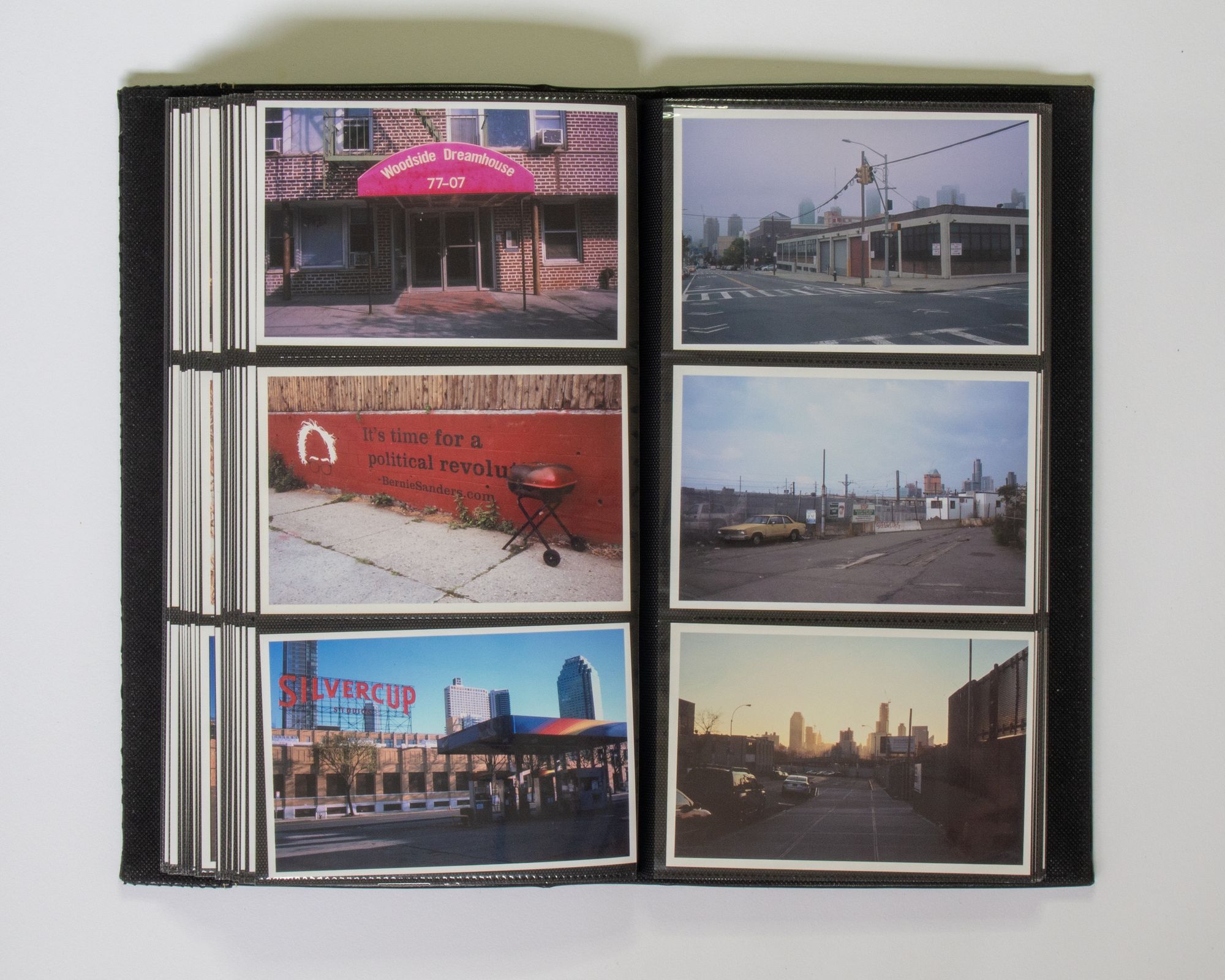
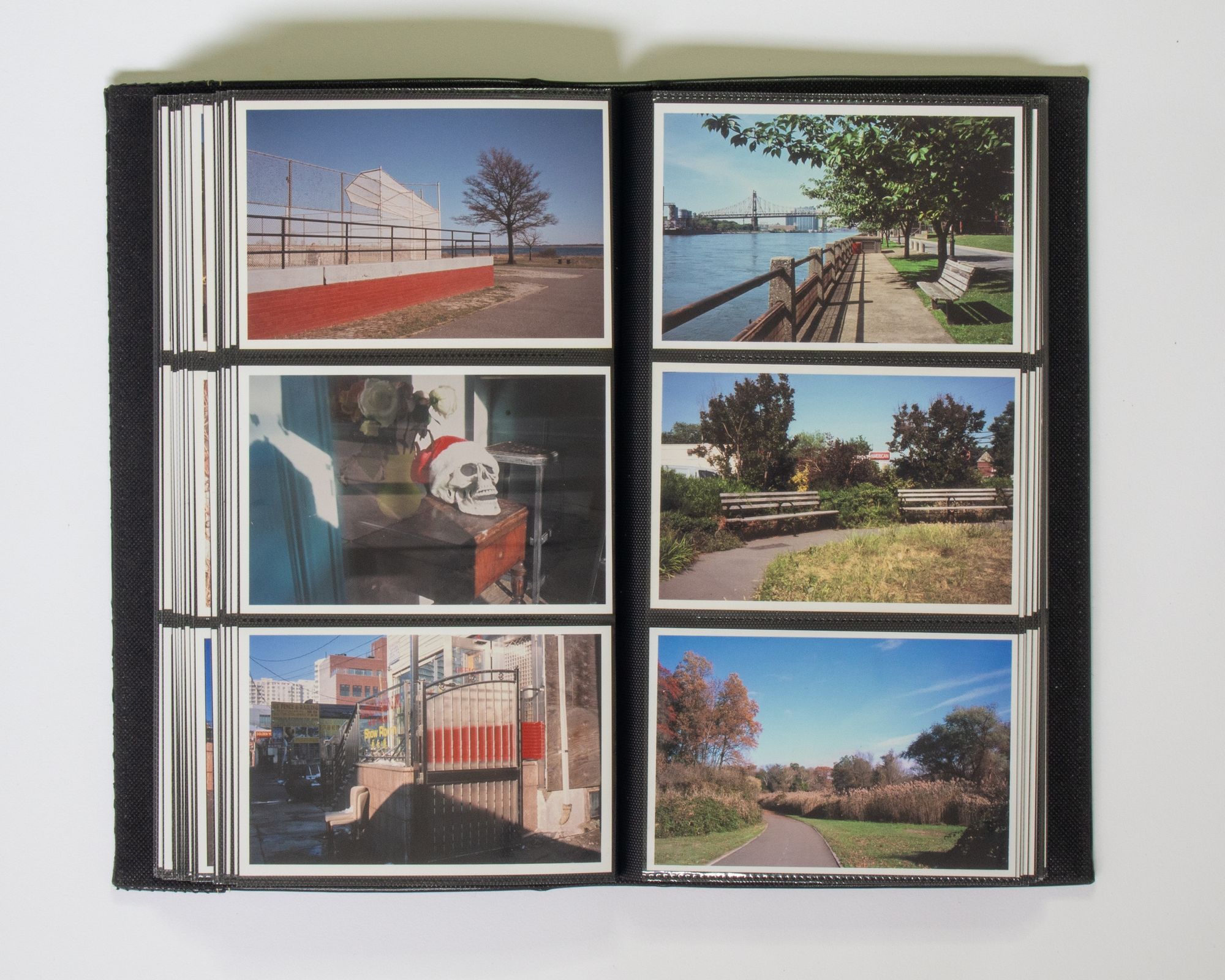
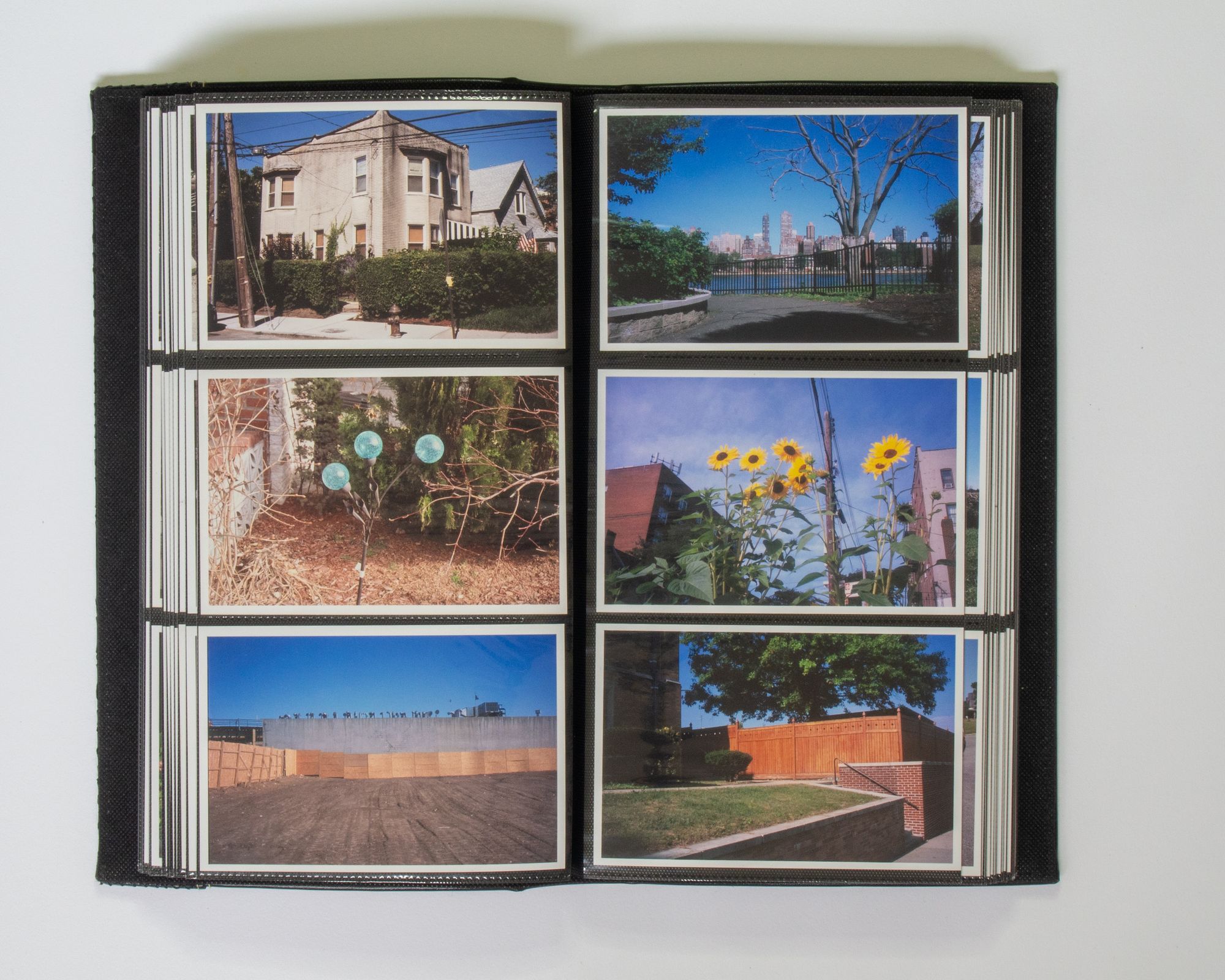

Pedestrian Infrastructure and Green Spaces
The project features several photographs of pedestrian infrastructure and green spaces. As I refined the project over the years, these elements became increasingly central to my creative inquiries, prompting me to incorporate more images.
The interconnectivity of these spaces throughout the city fascinates me, adding another layer of meaning to the long walks . However, it's not always a pleasant experience, particularly where these spaces intersect with bustling roads. In such circumstances, the vulnerability induced by car culture becomes strikingly evident.
Over time, I've developed a personal typology of sorts, encompassing pedestrian bridges, desire paths, interesting trees, roadside green spaces, art parks, and virtually anywhere that offers a unique and intriguing pedestrian experience. Given the inherent subjectivity of this process, I'm always intrigued by what other walkers find exciting when they're out exploring.
- Shore Pkwy Desire Path (Astoria Park, Astoria, Queens)
- Costco Park
- Kissana Park, Field 12 Desire Path
- Lefrak City Pedestrian Bridge
- 84th St & 58th Ave Pedestrian Bridge
- Willow Lake Pedestrian Bridge
- Socrates Sculpture Park
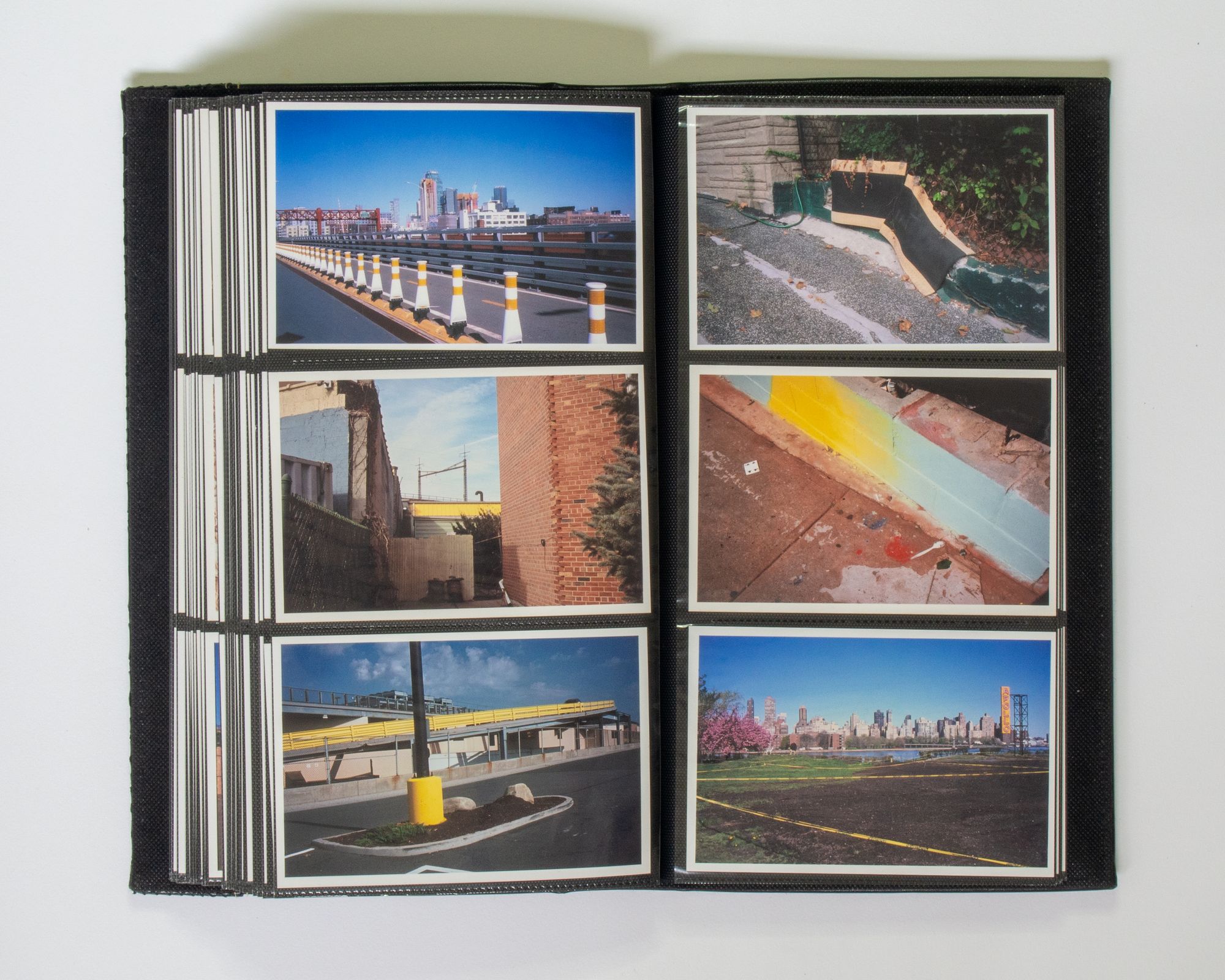

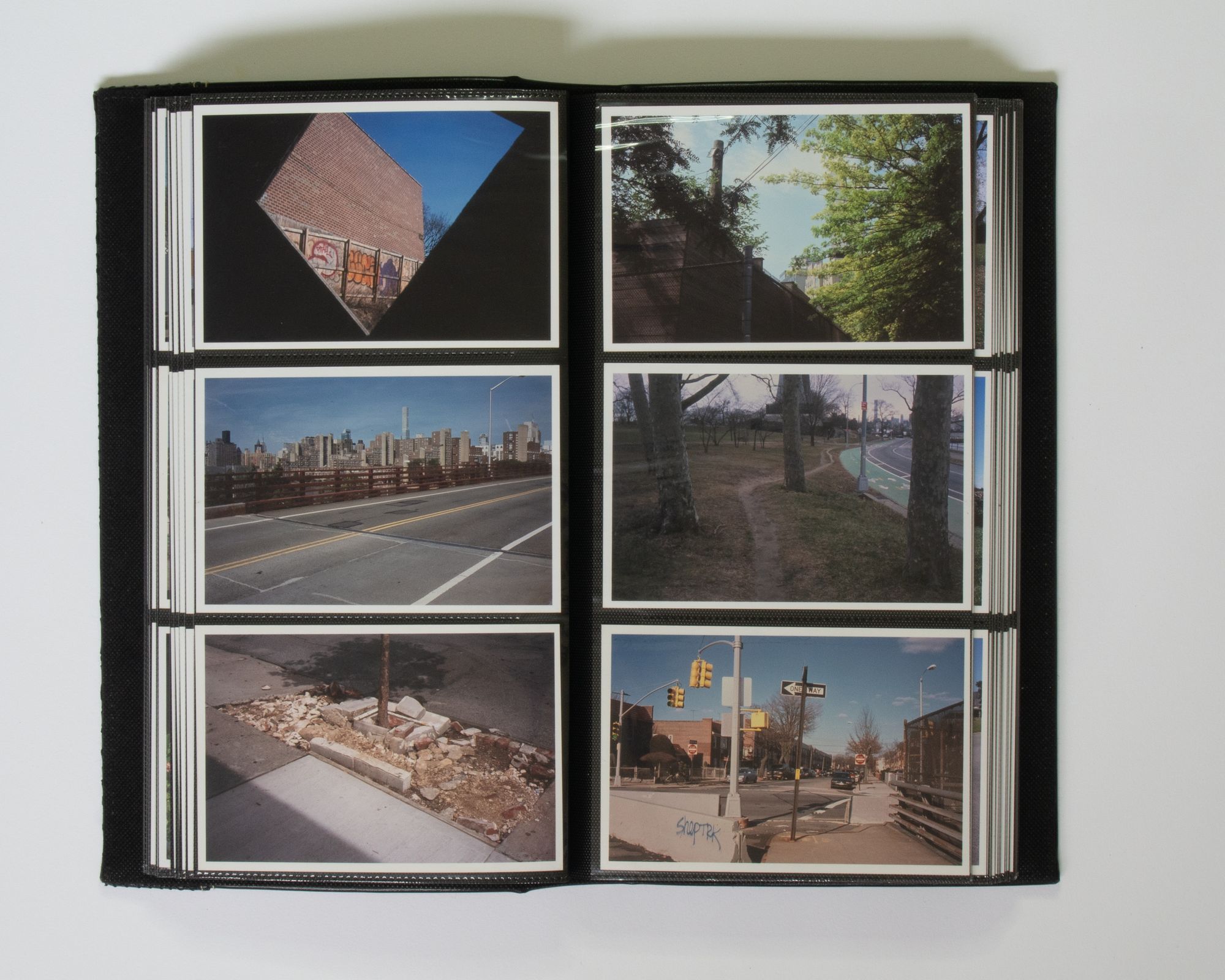
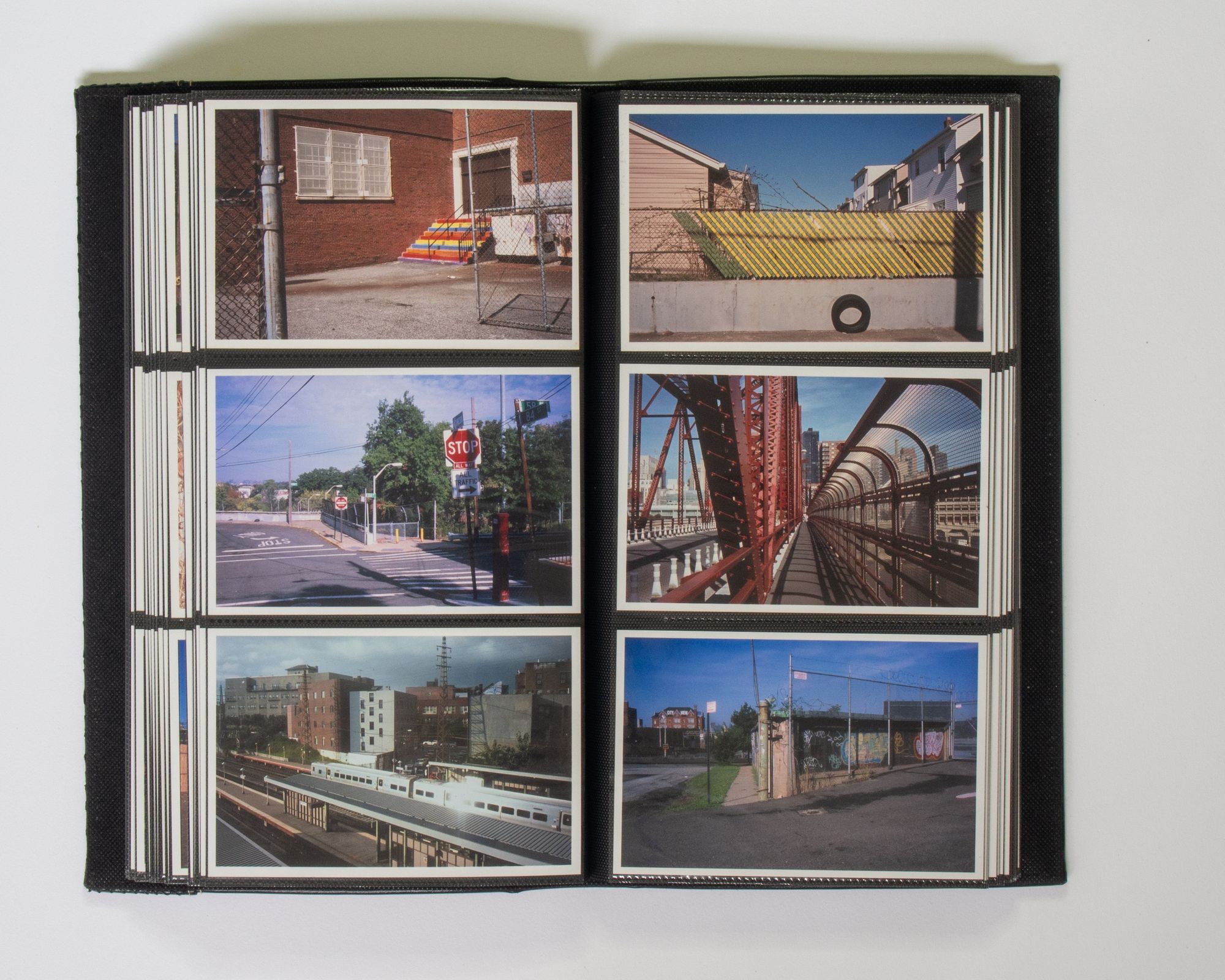
Fin Future
The idea of sequencing a slideshow has always intrigued me, particularly given the format of the slides. However, I haven't gone down that sidewalk just yet.
For the time being, I'm satisfied with placing the album and drawing on the shelf, letting them ferment in the archive. Perhaps in the future, I'll gain a new perspective on them, akin to how our neighborhood strolls evolve as we grow older.
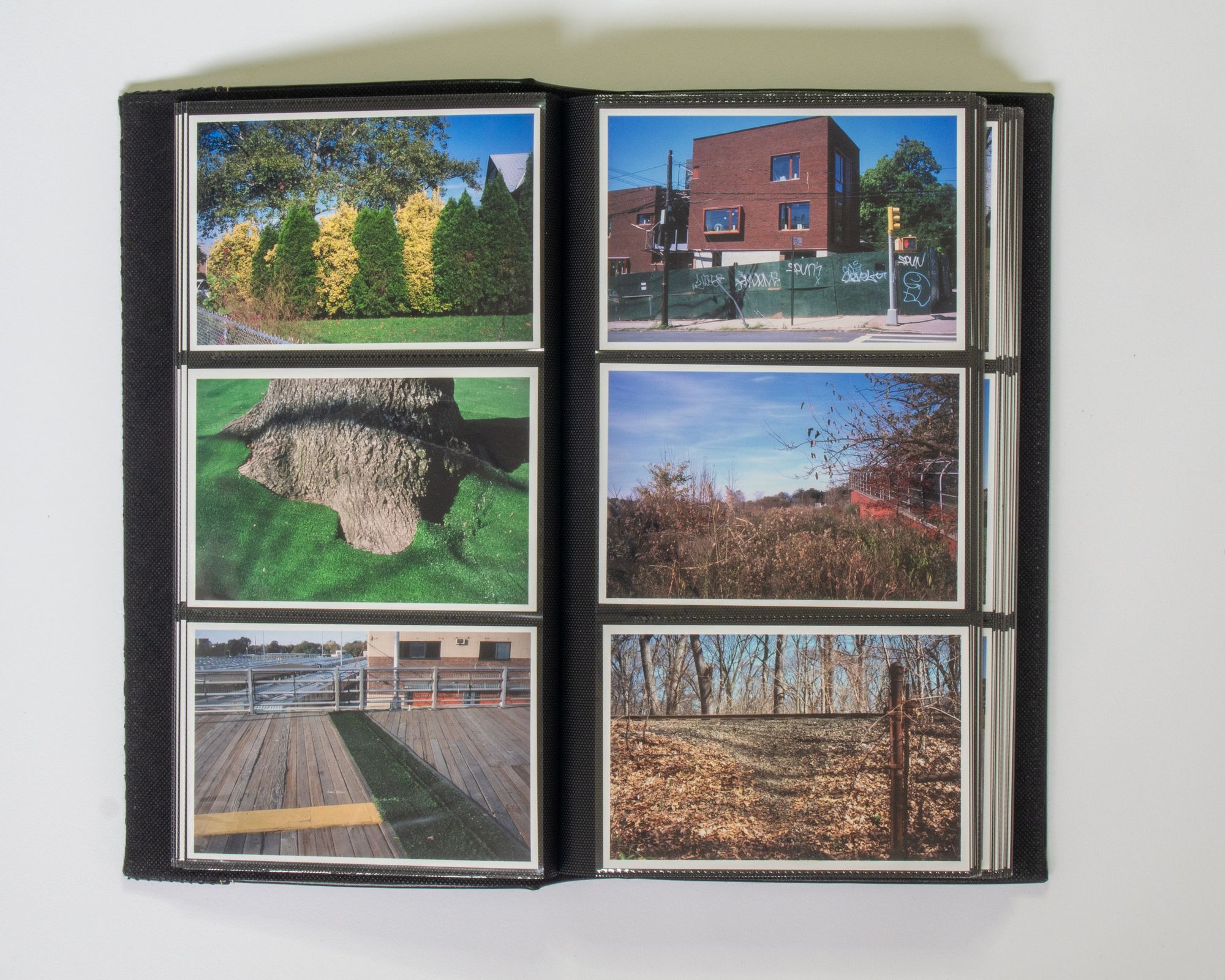


Inspiration
- Under a Denver Highway, Artists Find Space for the Surreal: "Why opt for such a crazily difficult site? Craig offers a surprisingly rational explanation: The artists (and developer Revesco Properties) saw the potential of two corridors whose future development will converge at the Convergence Station. Plans for the River Mile to the north of Meow Wolf and Sun Valley Eco District to the south aim to make the urban strip running along Denver’s Platte River more vibrant. Meow Wolf aims to be at the intersection of these cultural corridors — even if it takes some time for the developments to catch up. “They’re artists, and they’re so great at thinking outside of the box, literally,” Craig says. “Here they’re thinking inside the wedge.”
- Me walk pretty one day: “What’s the longest walk you’ve taken? I read that it was 22 miles. No, it was 91,000 steps. Forty-one miles. I can do 22 in my sleep.” - David Sedaris
- The car is king in the US – and pedestrian deaths are rising. Where is the outrage?:"We don’t need to invent new technology. We don’t need to spend gazillions of dollars on R&D to come up with a miracle cure. We just need to implement some common sense policy solutions and stop prioritising car culture over everything else."
I’m an artist and marketing strategist living in Minneapolis. This is my newsletter on art, walking, urbanism and mindfulness.
Each issue, I share new work from my projects and try to make connections between ideas, articles and people that fascinate me. You can email me at info@bryanformhals.com or follow me on Instagram.
